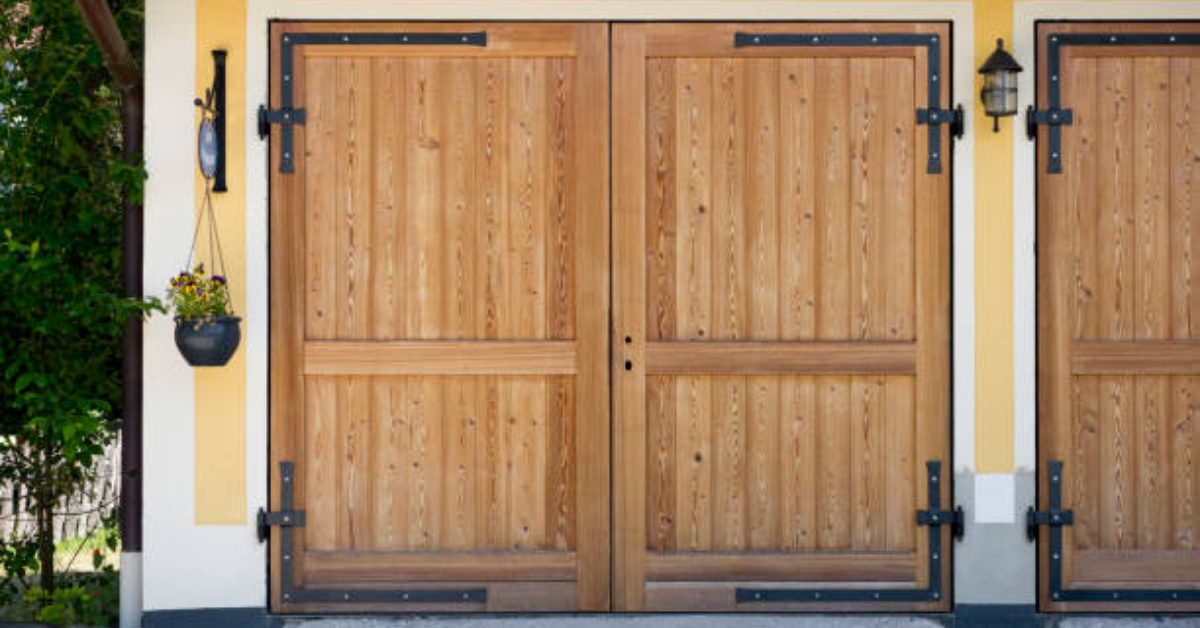How To Repair Wood Garage Door Panels?
Wood garage doors add a timeless charm to homes, but they can be susceptible to wear and tear over time. Damages such as cracks, warping, or rotting may occur due to weather exposure, physical impact, or neglect. Repairing your wood garage door panels promptly not only restores their aesthetic appeal but also maintains their structural integrity and prolongs their lifespan. This guide will walk you through the process of repairing wood garage door panels effectively and efficiently.
Identifying Common Issues with Wood Garage Door Panels
Before starting the repair process, it’s important to identify the exact issue affecting your garage door panels. Here are some common problems:
- Cracks and Splits: These often occur due to age, weather changes, or physical damage.
- Rotting: Prolonged exposure to moisture can cause wood to rot, weakening the panels.
- Warping: Extreme temperatures or humidity levels can cause wood to bend or warp.
- Loose Panels: Panels may become detached or wobbly due to weakened joints or hardware issues.
By pinpointing the issue, you can determine the appropriate tools and methods for repair.
Tools and Materials Needed
To repair wood garage door panels, gather the following tools and materials:
- Wood filler or epoxy resin
- Sandpaper (medium and fine grit)
- Wood glue
- Paint or wood stain
- Primer (for painted doors)
- Paintbrush or roller
- Putty knife
- Clamps
- Saw (if replacing sections)
- Measuring tape
- Screwdriver and screws
- Safety gear (gloves, goggles)
Step-by-Step Repair Process
1. Assess the Damage
Start by inspecting your wood garage door thoroughly. Take note of any cracks, splits, rot, or loose panels. Use a measuring tape to determine the size of damaged areas, especially if replacement is needed.
2. Clean the Surface
Before making any repairs, clean the damaged panel with a damp cloth to remove dirt, debris, or loose wood fibers. This ensures that the wood filler or glue adheres properly to the surface.
3. Repair Cracks and Splits
- For minor cracks, apply wood glue into the gap using a putty knife. Clamp the area until the glue sets.
- For larger cracks or splits, fill the gap with wood filler or epoxy resin. Smooth the surface with a putty knife and allow it to dry completely.
4. Address Rotting Wood
If the panel has rot:
- Use a saw to carefully cut out the rotted section.
- Replace it with a new piece of wood cut to fit the exact size of the removed area.
- Secure the new piece using wood glue and screws, and sand the edges for a seamless finish.
5. Fix Warped Panels
Warping can often be corrected by applying pressure:
- Remove the warped panel and soak it in water for a few hours to soften the fibers.
- Clamp it to a flat surface and let it dry completely. If the warp is minor, this should straighten it out.
- Reinstall the panel once it is dry and flat.
6. Reinforce Loose Panels
Tighten loose panels by checking the screws or nails securing them to the frame. Replace any damaged hardware and ensure the joints are solid.
7. Sand and Smooth
After making repairs, sand the repaired areas using medium-grit sandpaper to even out the surface. Follow with fine-grit sandpaper for a smooth finish.
8. Prime and Paint or Stain
- For painted doors, apply a primer to the repaired areas to ensure uniformity. Once the primer dries, paint the door in your desired color.
- For stained doors, choose a stain that matches the original finish and apply it evenly.
- Allow the paint or stain to dry completely before reattaching the repaired panel to the garage door.
Preventive Maintenance for Wood Garage Doors
To keep your garage door in excellent condition, follow these maintenance tips:
- Regular Cleaning: Wipe the door regularly to remove dirt, dust, and moisture.
- Seal the Wood: Apply a water-resistant sealant annually to protect the wood from moisture and rot.
- Inspect for Damage: Periodically check for cracks, warping, or signs of rot and address issues immediately.
- Lubricate Hardware: Keep the hinges, rollers, and tracks well-lubricated to ensure smooth operation.
When to Seek Professional Help
While many repairs can be done as a DIY project, some situations may require professional assistance. For instance: if the damage is extensive and affects the structural integrity of the door, if the door doesn’t open or close properly even after repairs, or if you lack the tools or expertise to handle the issue safely. In such cases, hiring a professional ensures that the job is done efficiently and safely, minimizing the risk of further damage. Fix N' Go, a leading garage door service provider, offers expert solutions for all types of garage door issues, ensuring high-quality workmanship and reliable service that homeowners can trust.
Conclusion
Repairing wood garage door panels is a straightforward process that can save you time and money while preserving the beauty and functionality of your garage door. By identifying the issue, using the right tools, and following the steps outlined above, you can restore your door to its original condition. Regular maintenance will also help prevent future problems, ensuring your wood garage door remains a stunning feature of your home for years to come.




